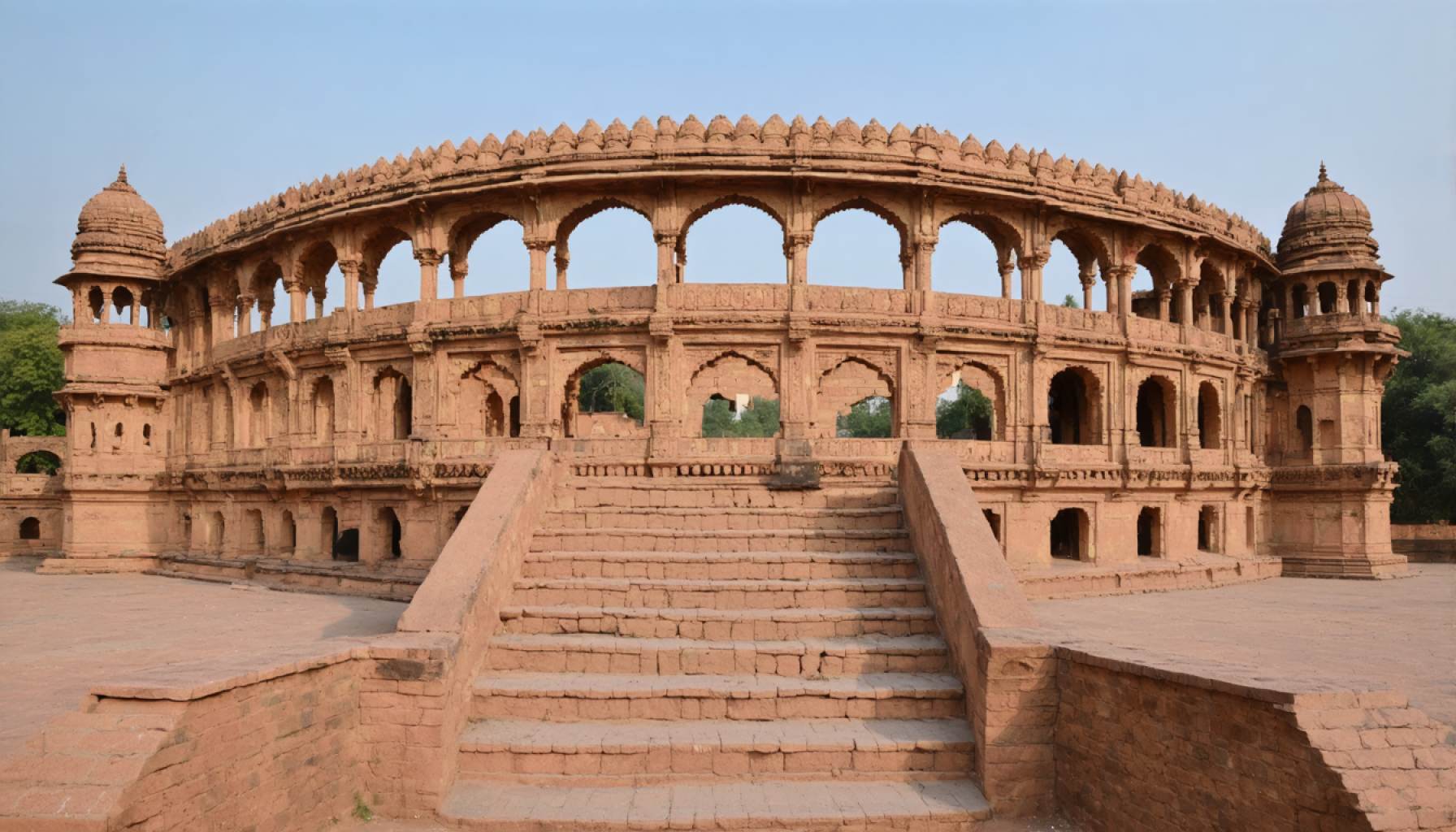- Madhya Pradesh is pioneering inclusive tourism by enhancing accessibility at its historical sites like Maheshwar, Orchha, and Mandu.
- The ‘Accessibility Infrastructure and Development’ project, led by state officials, strives to make ancient temples and forts accessible to everyone, incorporating ramps and Braille guides for enriched visitor experiences.
- This initiative coincides with World Heritage Day, marking a significant shift towards global inclusivity in cultural heritage tourism.
- Enhancements reflect a deeper cultural respect for all abilities, fostering renewed interest among local and international travelers.
- The project sets a precedent for harmonizing heritage conservation with accessibility, asserting that cultural treasures are meant for everyone.
- Emphasizing shared legacy, Madhya Pradesh invites the world to redefine inclusion within historical landscapes.
- Ultimately, this transformation underscores that culture’s true richness comes from its wide accessibility and ability to be shared broadly.
Madhya Pradesh, with its sprawling landscapes and ancient heritage, is redefining how the world sees inclusive tourism. As the dawn breaks over the storied stones of Maheshwar and the towering palaces of Orchha, a fresh chapter unfolds—a chapter that warmly beckons everyone, regardless of ability, to embark on a journey through time and culture.
World Heritage Day marks a transformative era for Madhya Pradesh’s tourism industry. The state’s ambitious ‘Accessibility Infrastructure and Development’ project, spearheaded by Chief Minister Dr. Mohan Yadav and Tourism Minister Shri Dharmendra Bhav Singh Lodhi, is reshaping the visitation experience at its legendary sites, including Mandu and Dhar. The iconic forts and temples, now infused with thoughtful accessibility enhancements, invite every visitor to explore their age-old secrets.
Through rolling ramps that weave through historical tapestries to tactile Braille guides, these enhancements ensure that no detail is lost to anyone. The sights, the stories, and the spirit of these destinations are now within the reach of all, laying out a welcome mat as expansive as the Great Indian Plains themselves.
Madhya Pradesh’s endeavor aligns with a broader global movement towards inclusivity, recognizing that the true richness of a culture lies in its ability to be shared widely. The upgrades go beyond mere infrastructure; they signal a profound respect and acknowledgement of diverse abilities, reigniting interest from both local and global travelers.
This transformation aims to set a precedent in India, proving that heritage preservation and accessibility can beautifully intertwine. As the stones of ancient temples gleam under the rising sun, they silently witness a new story—one where every visitor, regardless of their path, leaves with a piece of the past etched into their present.
The message is clear and resounding: historical treasures are for everyone to experience. This initiative serves as a beacon of progress, inviting the world to rethink the landscapes of inclusion and heritage. With each step taken in Madhya Pradesh, a future is built where historical and cultural legacies are open to all—affirming that the beauty of our shared past genuinely belongs to everyone.
Experience the Revolution of Inclusive Tourism in Madhya Pradesh
Embracing Accessibility in Historical Tourism
Madhya Pradesh’s initiative to make its historical sites more inclusive is not only a testament to its rich cultural heritage but also a commitment to modern accessibility standards. With the ‘Accessibility Infrastructure and Development’ project, new visitor-friendly modifications are sprucing up historic locations such as the forts and temples of Mandu and Dhar. This movement celebrates World Heritage Day with a focus on making history accessible to everyone, regardless of their physical abilities.
Key Features of Madhya Pradesh’s Accessibility Project
– Rolling Ramps and Pathways: These provide smooth travel for wheelchair users and those with mobility challenges, ensuring unhindered access to historical sites.
– Tactile Braille Guides: For visually impaired visitors, the addition of Braille guides helps them experience the rich stories that these sites have to offer.
– Audio Guides: Audio guides in multiple languages further enhance the accessibility, allowing visitors with different language needs or visual impairments to engage deeply with the history and culture.
– Dedicated Support Staff: Trained personnel available on-site to assist visitors with disabilities, providing both information and physical assistance if needed.
Real-World Applications and Benefits
How-To: Inclusivity Enhancements
1. Conduct Accessibility Audits: Evaluate and identify barriers within current site infrastructures.
2. Implement Universal Design Principles: Use these guidelines to create environments usable by all people, to the greatest extent possible.
3. Community Engagement: Involve local and international stakeholders in the planning process to address diverse needs.
Market Forecast and Industry Trends
The tourism industry is increasingly recognizing the importance of inclusivity. According to a report by the World Tourism Organization, accessible tourism is projected to grow significantly as the global population ages and more destinations recognize the value of inclusive design.
Addressing the Pressing Questions
Why is inclusive tourism important?
Inclusive tourism widens the audience and ensures that everyone, regardless of their physical or mental capabilities, can enjoy the cultural wealth of destinations. This approach also boosts tourism revenue by attracting a broader range of visitors.
What are the limitations and challenges?
Implementing accessibility features often involves significant cost and requires renovations in areas with architectural limitations. However, the long-term benefits, including increased tourist satisfaction and expanded visitor demographics, far outweigh these challenges.
Actionable Recommendations
– Plan Visits Accordingly: When visiting, check for available accessibility features and assistance beforehand.
– Leverage Technology: Use apps and devices that provide audio and text translations to enhance the experience.
– Champion Inclusivity: Advocate for accessible tourism wherever you go, helping spread awareness and drive change.
Conclusion
Madhya Pradesh is setting a new benchmark for inclusive tourism, demonstrating that heritage sites can indeed be enjoyed by all. As travel destinations become more welcoming to diverse groups, the experience of exploring ancient culture becomes richer and more rewarding for everyone.
For more information on how Madhya Pradesh is transforming its tourism landscape, visit the official tourism website: Visit Madhya Pradesh Tourism.
